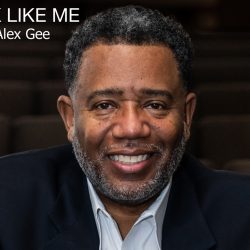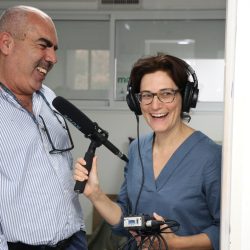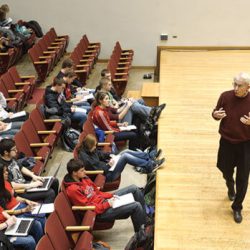Audio Philes
Four years ago, Jeremy Morris launched his podcast class at the UW — and the word podcast wasn’t even in the title of the communication arts course.
Then Serial debuted. The true-crime monster hit was part of a wave of new podcasts that turned the tide, to the point that last year, Nielsen reported a full 40 percent of the U.S. population — or 112 million people — had listened to a podcast.
Now, in the midst of the golden age of podcasts, the course has a new name — Sound Cultures: Podcasting and Music — and increased demand. Morris, an associate professor of media and cultural studies, exposes students to a wide variety of podcasts and gives them hands-on experience with manipulating audio.
“I like to remind them that the software is going to change,” says Morris, who produced a music podcast as a graduate student and recently received a National Endowment for the Humanities grant to make podcasts easier for scholars and the public to research. “It’s more about understanding the role sound can play.”
From a first assignment of making a sound “playlist” of their day to the final project creating a pilot episode of a new podcast, Morris hopes students critically analyze how sound constructs their everyday lives and the ways it is linked to issues of age, race, class, gender, history, and culture.
“I want students to think about why they hear what they hear,” he says. “Sounds aren’t as universal as we think they are.”
Published in the Summer 2018 issue




Comments
No comments posted yet.